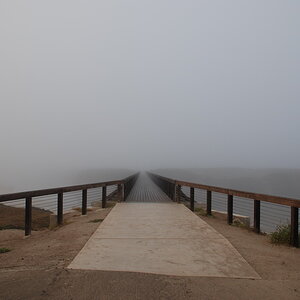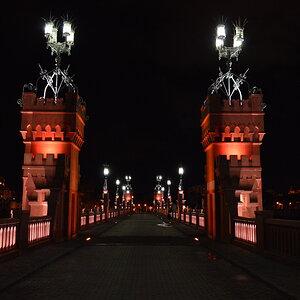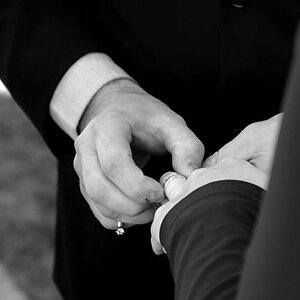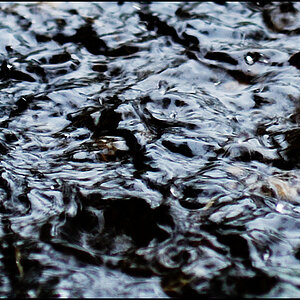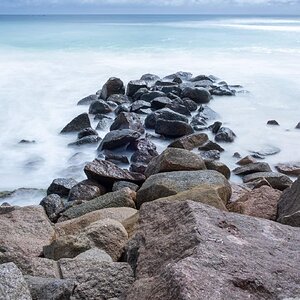darin3200
TPF Noob!
- Joined
- May 3, 2005
- Messages
- 2,078
- Reaction score
- 28
- Location
- Des Moines, Iowa
- Website
- friedrichsphotography.com
To start off, I was bored.
I was trying some organic toning and it was going ok with coffee so I made a big pot of tea and let it boil for a while. I had some prints from the darkroom that didn't come out just right, but were still ok. I took one and put it in the boiling tea. After a couple minutes it was nice and orange and it was starting to seperate just a little around the corners. I took a tweezers and slowly and gently peeled the paper backing off just a little. Put it back in the tea, peel a little more off, back into the tea, etc... Then I had a very thing piece of paper with the image on it. It was put between to pieces of glass and then into the oven to dry with too much curling. Then I put some paper cement on some construction paper and laid the image on there.
I don't need polaroids, I've got gelatin-silver transfers

I was trying some organic toning and it was going ok with coffee so I made a big pot of tea and let it boil for a while. I had some prints from the darkroom that didn't come out just right, but were still ok. I took one and put it in the boiling tea. After a couple minutes it was nice and orange and it was starting to seperate just a little around the corners. I took a tweezers and slowly and gently peeled the paper backing off just a little. Put it back in the tea, peel a little more off, back into the tea, etc... Then I had a very thing piece of paper with the image on it. It was put between to pieces of glass and then into the oven to dry with too much curling. Then I put some paper cement on some construction paper and laid the image on there.
I don't need polaroids, I've got gelatin-silver transfers




![[No title]](/data/xfmg/thumbnail/34/34062-c0c9c0a752bc1af58237eff1ec850163.jpg?1619736259)


